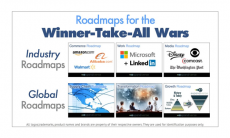Gentle reader, I am about to provide you the most blatantly obvious advice you’ll ever receive. No need to thank me. I’m happy to do it. And if you wonder why I’m spending any time on this, it’s because sometimes the most obvious facts are also the most overlooked. We all like to say “hindsight is 20/20,” right? Well, it’s because we frequently miss those things standing right in front of us. Many businesses look at their conversion rate, typically defined as the number of sales divided by the number of visits or visitors. (If you want to understand conversion rates in more detail, I’ve done a full breakdown of industry average conversion rates in the past.) But relatively few look at where those conversions come from. Which is why the first conversion that matters isn’t getting site visitors to buy. It’s getting them to come back.

Image by Omar Omar via Flickr
I’ve spent the last decade or so working on increasingly sophisticated segmentations of site data from a variety of businesses. Those segments include just about every possible permutation of:
- Paid search visits
- Natural search visits
- Direct navigation (i.e., people who type in your URL)
- Referred traffic
- Email traffic
- Other “loyalty” segments (e.g., logged-in vs. non, “rewards members” vs. non, etc.)
And after spending seriously unhealthy amounts of time with these data, I’m comfortable making a few general statements:
- People who know your brand convert at higher rates than people who don’t.
- People who search on your brand terms convert at higher rates than people who search generic terms.
- People who return to your site convert at higher rates than people on their first visit.
- People who have bought from you before convert at higher rates than people who haven’t.
Well, duh, right?
But, then why do so many brands only emphasize getting people to buy right away and so few focus on also getting people to come back? “Conversion rate,” as most people tend to look at it, is really the final step in a process. But each step is itself a conversion. And the first conversion you need to think about is how to get people to return to your site once they’ve visited in the first place.
Don’t believe me? That’s OK. But check out these recent findings from conversion optimization specialty firm SeeWhy: some 57% of e-commerce conversions, measured from the shopping cart, came from people navigating directly to the website or from an email. In both cases, the customer clearly had some familiarity with the brand.
Now, don’t misunderstand me. I would never suggest you shouldn’t work to improve your landing pages, copy or offers to drive higher e-commerce conversion rates. But, you should also look at how to draw people back once they’ve arrived in the first place. For instance, do you have an email marketing list? If so, do you track how effective your website is at capturing new members? Do you test different calls to action or benefit statements near the email signup? Is your email enrollment prominent–or, even visible–on the page?
What about social? Do you have a presence on key social networks where your customers spend their time? Do you promote those on your site?
Again, I don’t recommend making any of these more prominent than your primary offer. But make sure people can:
- See them, and
- Understand what’s in it for them if they engage.
Also, take a look at retargeting options that exist to help you retain or recover visitors to your site. A number of excellent and affordable tools are beginning to appear on the market designed to drive more business from people already engaged with your brand.
As mentioned earlier, e-commerce is a process, not an event. Getting potential customers engaged with your brand takes continually working to improve your value proposition and your opportunities to message that value proposition to your site visitors. It’s not always easy. In fact, sometimes it’s a downright pain. But, continue to work on improving the first conversion and, believe me, the benefits will be obvious.




